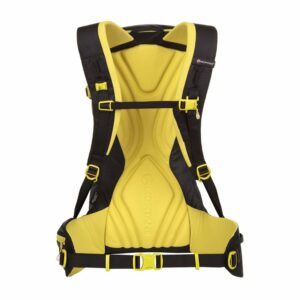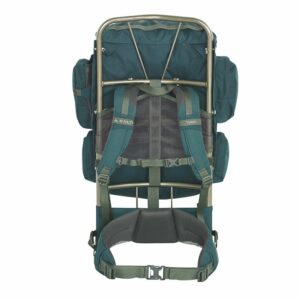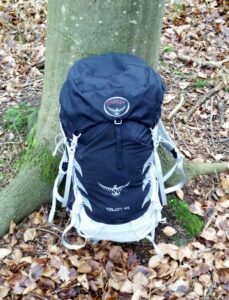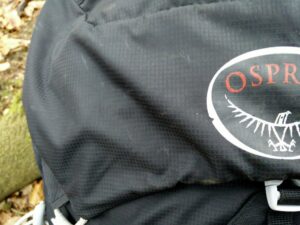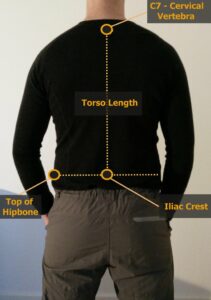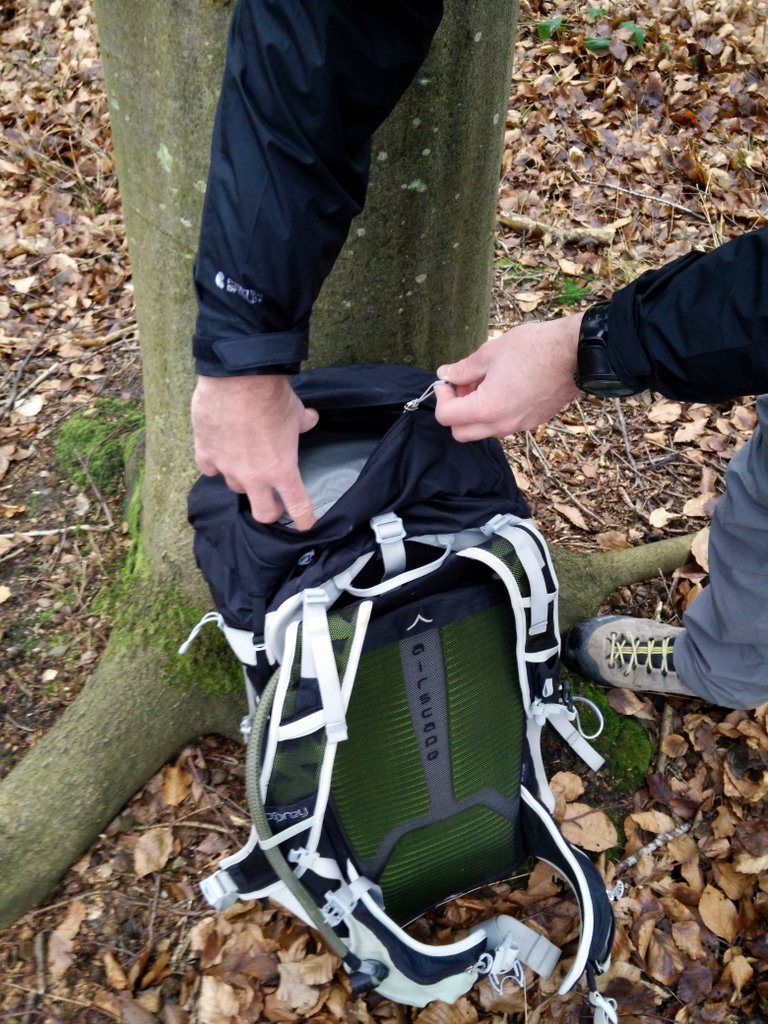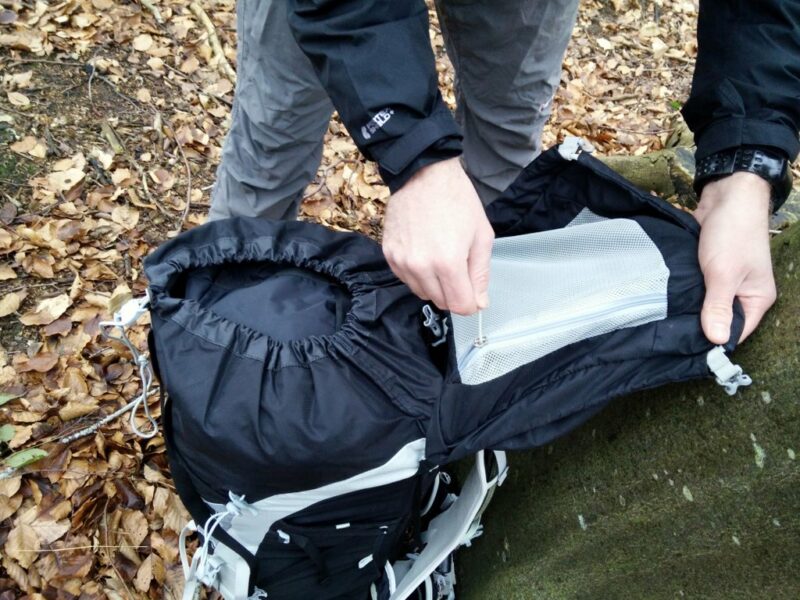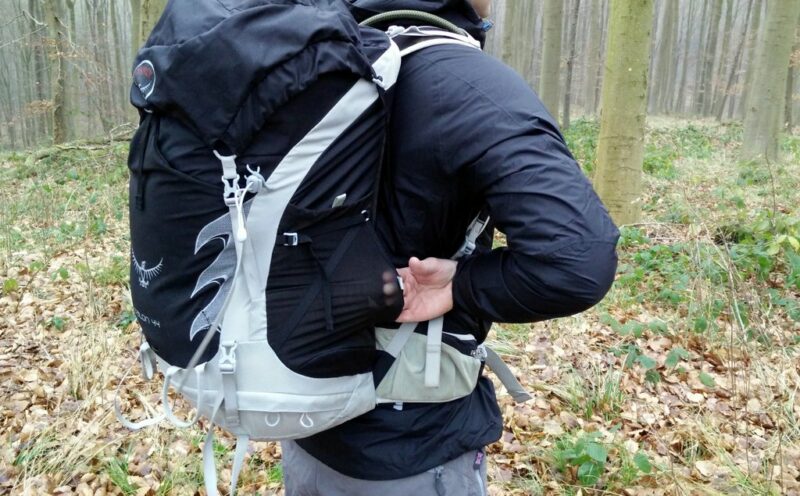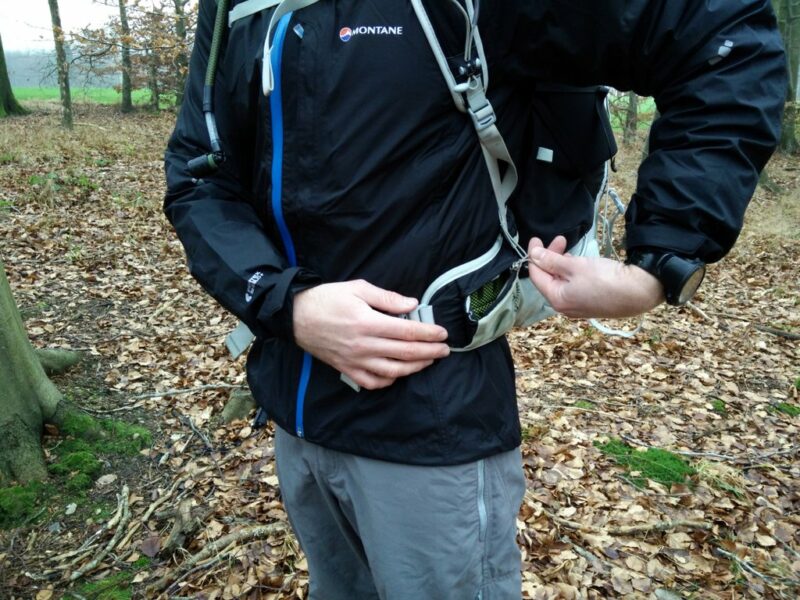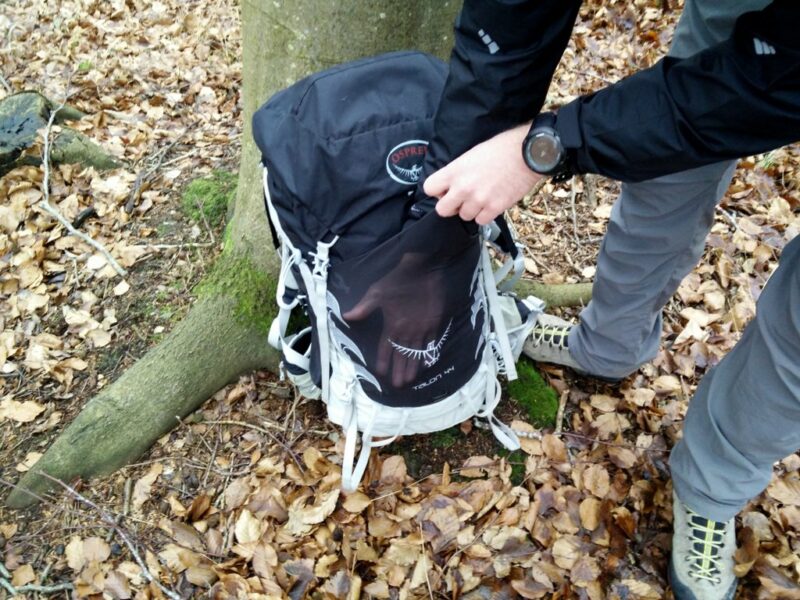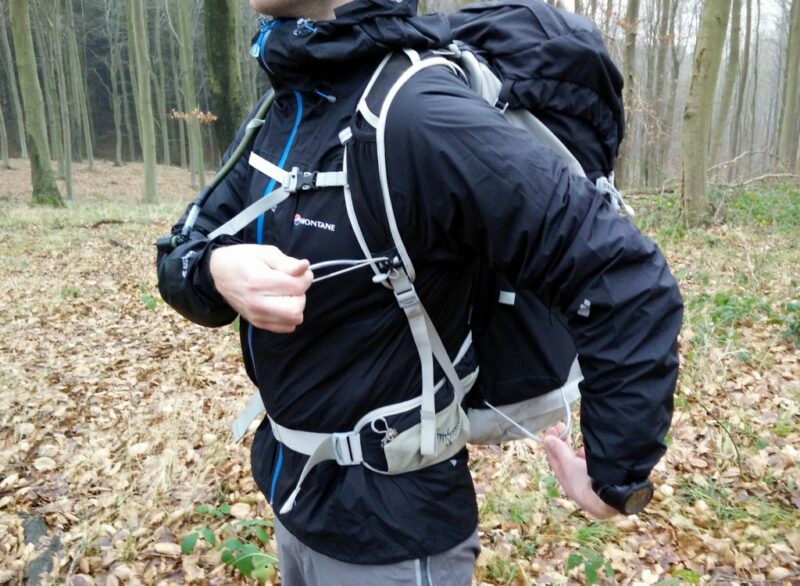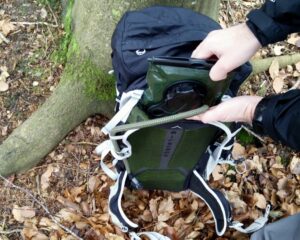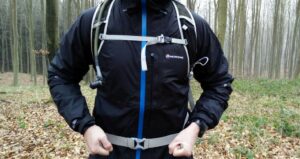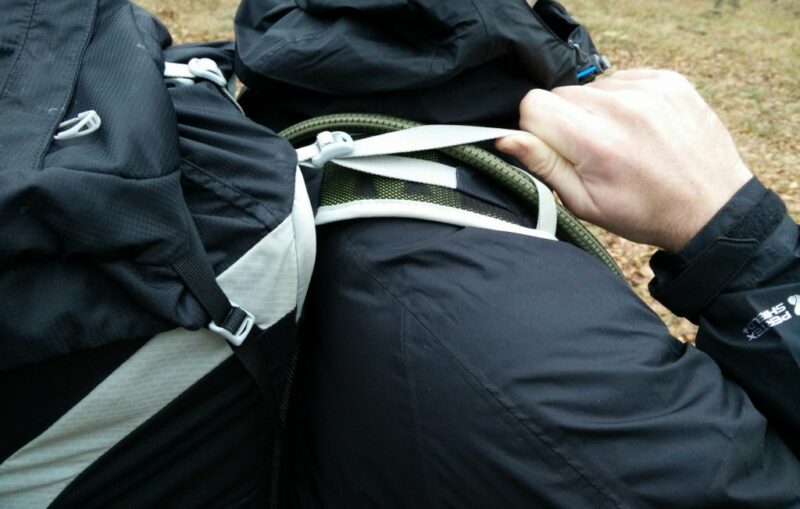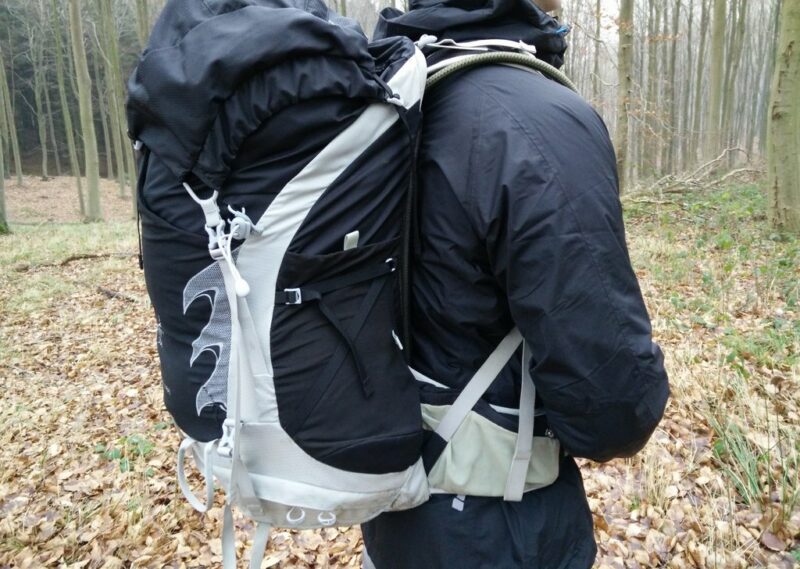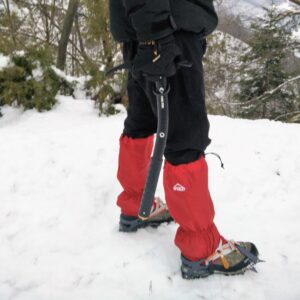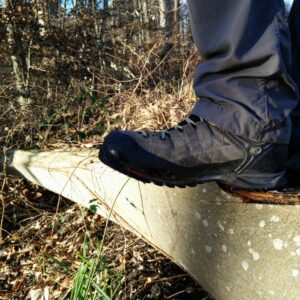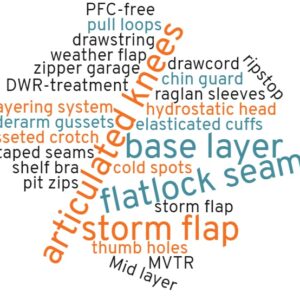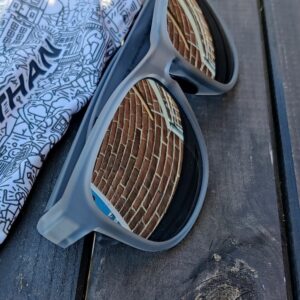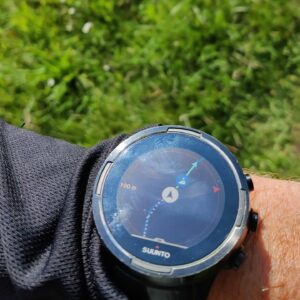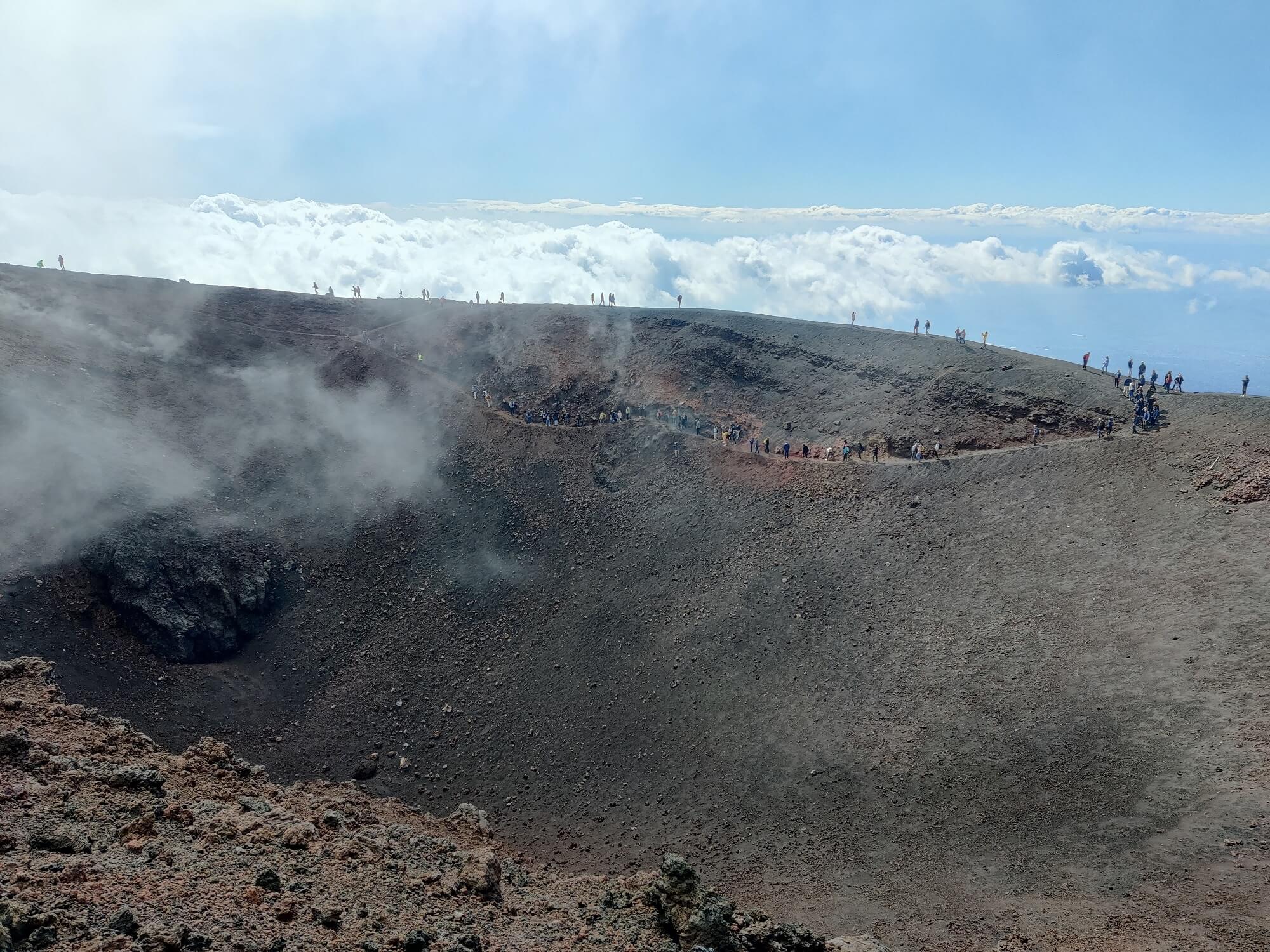Backpack enables you to easily carry water, food, additional clothing and other necessities. Hiking backpacks vary greatly in design, capacity, fit and features. Therefore it can be hard to decide which backpack to buy. In this guide to hiking backpacks we first explain different types of backpacks and then help you figure out your needs when it comes to capacity, fit and features. If you have questions that this guide does not answer, feel free to drop us a line in the comments below.
Table of Contents:
Types of Backpacks
Hiking backpacks can be divided into three types; frameless backpacks, internal-frame backpacks and external-frame backpacks. Below is a short description of each type.
Frameless Backpacks
Best for: Carrying light loads
Construction: Flexible
Typical weight: Very light
Frameless backpacks have a flexible construction and are thus very light (they don’t contain “heavy” aluminum rods or plastic framesheets). A high-quality frameless backpack with a volume of 40 liters can weigh as little as 600 grams. The downside of frameless backpacks is that they don’t transfer the weight from the shoulders to the hips (via the hip belt) efficiently because a rigid construction is required for this. Therefore, they are not suitable for carrying heavy loads and typically also don’t have a capacity of more than 40 liters. Nevertheless, frameless backpacks are very useful for day hikes and fast lightweight alpine ascents, exactly because of their low weight.
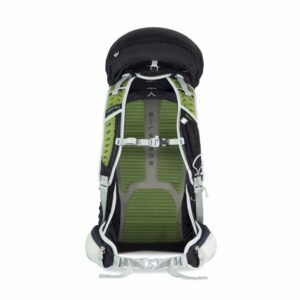
Osprey Talon 44 Internal-frame Backpack – The backpack has a circular internal frame which comes around the backpanel
Internal-frame Backpacks
Best for: Carrying light to heavy loads
Construction: Semi-rigid or rigid
Typical weight: Light to mid-weight
Internal-frame backpacks have a rigid or semi-rigid construction as they use flat aluminum rods or plastic framesheets; the former runs vertically behind the backpack’s back panel and prevents the backpack from collapsing. The rigid construction enables the weight of the backpack to be efficiently transferred from the shoulders to the hips (via the hip belt), which increases your performance as the hips are supported by larger muscle groups than the shoulders. However, the rigid structure adds some weight to the backpack and thus internal-frame backpacks are typically heavier than frameless backpacks. Nevertheless, some internal-frame backpacks come with removable framesheets/rods so that you can decrease the backpack’s weight in case that rigidity is not required (when carrying light items for example). Most backpacks with a capacity of more than 40 liters are internal-frame backpacks.
External-Frame Backpacks
Best for: Carrying heavy and very heavy loads
Construction: Rigid
Typical weight: Heavy
External-frame backpacks are nowadays rarely used for hiking as they are heavier, bulkier and less travel-friendly than the other two types of backpacks. An external-frame backpack consists of a harness (shoulder straps and a hip belt), aluminum frame and a pack. The aluminum frame is completely rigid in order to provide good load support. However, the large and robust aluminum frame also significantly increases the weight of the whole system – an external-frame backpack with a capacity of 50 liters typically weighs more than 2000 grams. The advantage of external-frame backpacks is that they usually have highly adjustable harnesses (they fit tall adults as well as teens). Furthermore, they can also be customized – you can easily replace the pack with a bigger or a smaller pack without replacing the frame or harness. External-frame backpacks are often used for carrying items of irregular dimensions – with a bungee cord or a rope you can easily attach various bulky items to the frame.
Characteristics of Hiking Backpacks
Capacity
What capacity you need depends on the total volume of gear and supplies that you want/need to carry with you. Multi-day hiking trips will require more supplies (food, water etc.) and gear (sleeping equipment, additional clothing etc.) than day hikes and thus a bigger backpack. You will also need a bigger backpack if you are doing technically challenging trails or often hike in the winter time due to the need for technical equipment (climbing harness, helmet, snow shoes, rope etc.) and/or bulky insulated clothing. However, keep in mind that you can significantly reduce the volume (and weight) of your gear by replacing certain items with high-quality versions which compress better (especially true for sleeping bags and insulated jackets). Furthermore, you can also reduce the weight and volume of food by packing calorically dense food which will require less space – for more information about this read our article How to choose food for a hiking trip. If you have troubles deciding how much water to take with you, also read our article How much water to take on a hiking trip.
As all hikers have their own preferences when it comes to equipment (some prefer to bring nearly everything they own while others are more minimalistic), it is usually unhelpful to categorize backpacks by trip length such as overnight backpacks, weekend backpacks etc. The best method to figure out what capacity you need is to pack the gear you plan to carry into a backpack/suitcase/trolley with a known volume and then decide to go either for a bigger or a smaller backpack. However, keep in mind that having a too big/spacious backpack is not optimal because every backpack needs to be sufficiently filled to be stable; otherwise items can move around and affect your balance – which can be dangerous on technically demanding terrain. For guidance on how to properly pack your backpack, check out the article How to pack a backpack.
The capacity/volume of a hiking backpack is typically measured in liters and written on the backpack or included in the product name – such as the Montane Grand Tour 55 backpack with a volume of 55 liters. Some backpacks are available in different volumes; for example Osprey Talon backpack is available in an 11, 18, 22, 33 and 44 liter version.
When it comes to capacity/volume we can divide backpacks into three different groups; daypacks (with a volume of less than 35 liters), and extra large backpacks (with a volume of more than 70 liters).
For very short hikes you can use a lumbar waist pack instead of a backpack. These packs offer very little storage space but are handy for carrying water and snacks.
Material
Hiking backpacks are typically made of nylon. Nylon comes in different deniers – the higher the denier, the more durable and abrasion-resistant is the fabric. However, a higher denier also entails a heavier fabric and thus hiking backpacks usually don’t use nylon with a denier higher than 210 although abrasion-prone areas (such as the bottom of a backpack) might be reinforced with a tougher fabric for increased durability. Sometimes durable Cordura fabric is used in abrasion-prone areas.
Nylon is usually reinforced with interwoven threads at regular intervals (ripstop) for better tear resistance. Ripstop fabrics isolate the tear and prevent it from expanding. The nylon used for hiking backpacks is often coated with polyurethane or silicone in order to be water-resistant. However, be aware that this doesn’t mean that the backpack as such is waterproof as backpacks usually don’t come with waterproof zippers.
Fit
An ill-fitting backpack can diminish your performance whereas a well-fitting hiking backpack can increase it. The backpack has to match your torso length so that it sits comfortably on your back. while the hip belt has to fit your waist/hips circumference. Before buying a hiking backpack, check that your torso length matches the respective torso range of the backpack you had in mind. This is very important as the backpack will otherwise ride too low or too high on your back. Most modern backpacks come with adjustable harnesses and thus it’s usually very easy to get a backpack that fits you well. Some backpacks also come in different sizes (torso lengths).
To get your torso length you need to measure the length from the bony bump at the base of your neck where the slope of the shoulder meets the neck (C7 – the seventh cervical vertebra; tilt your head forward to make it easier to find), and down to the point of your spine which is placed in between the tops of your hipbones (iliac crest). Stand up straight while measuring to get precise measurements.
The weight of a backpack can only be efficiently transferred from the shoulders to the hips if the hip belt fits you. As hip belts are adjustable, it rarely happens that a hip belt is too large or too small but very petite or heavyset persons should pay extra attention. To be sure, you can measure the circumference around the top of your hips (iliac crest) and compare it with the backpack’s specifications.
Also, check out our article How to fit a backpack, where we explain how to correctly adjust the suspension system, hipbelt, shoulder straps etc.
Features
Access
Backpacks are either panel-loading or top-loading.
Panel-loading Backpacks:
Panel-loading backpacks offer access to the main compartment through a U-shaped zipper (the backpack opens in a similar way to a suitcase). This allows you to easily find items in the backpack. However, panel-loading backpacks are in general less durable than top-loading backpacks exactly because of the long zipper (as zippers are vulnerable to malfunction). A panel-loading design is usually used for daypacks while bigger backpacks have a top-loading design.
Top-loading Backpacks:
Top-loading backpacks have a drawstring and a lid at the top. Many top-loading backpacks have an extendable top lid (e.g. the straps that hold the lid can be extended) which comes in handy as it allows you to put various gear (like for example a sleeping pad) between the main compartment and the lid. Some large and medium-sized top-loading backpacks also offer access to the main compartment via a zipper at the bottom or on the sides. This is very useful for taking out objects usually stored at the bottom (such as a sleeping bag) – you can access them without having to unpack the whole backpack.
Back panel
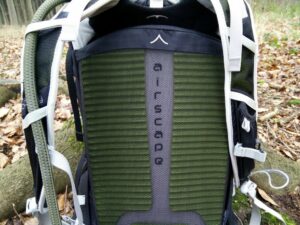
Ventilated Back Panel – It is made of foam and covered with a suspended mesh fabric for good ventilation
The back panel of a backpack sits against your back and thus influences your comfort. Back panels are typically made of ergonomically shaped foams which feature “air channels” for good ventilation. In some cases the foam back panel is also covered with a suspended mesh fabric which creates a gap between your back and the back panel and thus further increases the ventilation. Deuter’s Advanced Aircomfort System is an example of such a back panel. However, a very sophisticated and comfortable back panel can make a backpack heavier as it requires more materials. Therefore, backpacks for lightweight alpine ascents typically do not feature such back panels.
Pockets and Attachment points
Pockets allow you to organize your items so that you can quickly find them during the hike while attachment points come in handy for attaching ice axes, hiking poles and other bulky gear. Different backpacks have different configurations of pockets and attachment points. Always consider how much you would actually use a certain type of pocket or attachment point – not everybody needs every single feature.
External top lid pocket (image 1):
An external top lid pocket comes in handy for storing regularly used items such as gloves, hat, headlamp, sunglasses etc. Usually the pocket can’t be reached without first taking the backpack off but if you are hiking in a group somebody can easily open it for you and hand over the required gear.
Internal top lid pocket (image 2):
An internal lid pocket is great for storing valuables such as car keys, wallet etc.
Side pockets (image 3):
Side pockets can be used for storing water bottles or other frequently used items. In some cases they can be accessed without taking the backpack off first but it depends on the backpack.
Hip belt pockets (image 4):
Hip belt pockets are very useful as they are easy accessible. They are perfect for storing smaller items such as a cell phone, camera, GPS device etc.
Stash pocket (image 5):
A stash pocket is a fairly large pocket, typically on the front side of the backpack, which comes in handy for storing wet clothing and other items that you don’t want to put into the main compartment. It is usually made of stretchy mesh fabric.
Attachment points (image 6):
The most common attachment points on hiking backpacks are ice axe loops, trekking pole attachment systems and adjustable straps at the bottom of the backpack. Adjustable straps at the bottom allow you to easily attach bulky items such as a tent or sleeping pad.
Hydration bladder sleeve/pocket
Many modern backpacks have a sleeve or a pocket for a hydration bladder. An internal hydration bladder sleeve/pocket is located in the main compartment while an external hydration bladder sleeve is placed outside the main compartment. External sleeves are usually placed between the main compartment and the back panel. They are more practical than internal sleeves because they allow you to insert the hydration bladder even when the backpack is fully loaded.
For more information about hydration systems, you can read the article Hydration Systems VS. Water Bottles and check our selection of the Best Hydration Bladders.
Hip belt and sternum strap and shoulder straps
As mentioned above, a hip belt helps to transfer the weight from your shoulders to your hips. However, it also increases the stability and balance of the backpack which is very useful on technically challenging terrain where a sudden shift of the backpack could result in a fall. A sternum strap further increases the backpack’s stability.
Most shoulder straps are padded for increased comfort – the heavier the load, the more important it is to have well-padded shoulder straps.
Load adjuster straps and compression straps
Load adjuster straps connect the upper part of shoulder straps to the top of the backpack. They allow you to pull the upper part of the backpack closer to the body to decrease the pressure on your lumbar area. Load adjuster straps are only effective when the backpack is fully loaded.
Compression straps allow you to pull the backpack’s contents closer to your back in order to decrease the backpack’s impact on your center of gravity. They are also handy for stabilizing items in the backpack if the backpack is not fully loaded.

